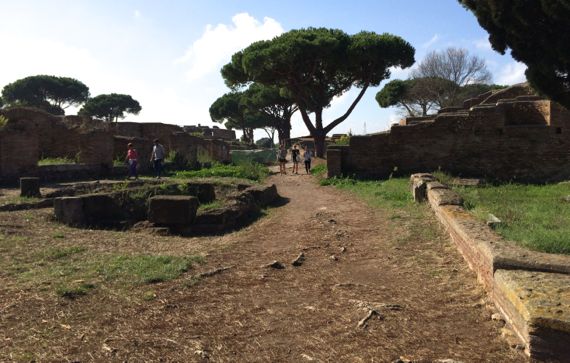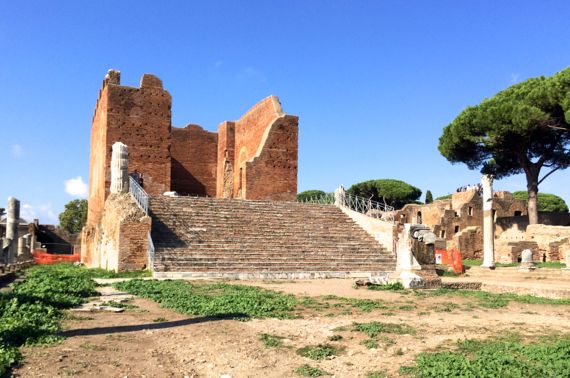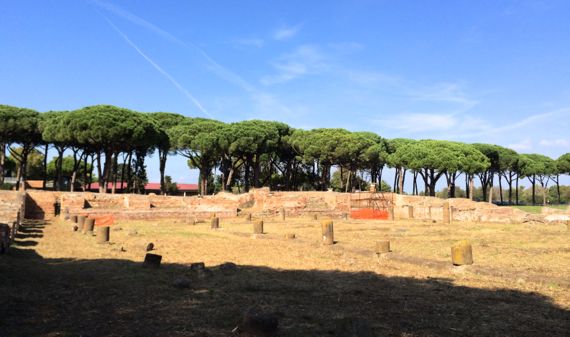Many options for the day: I chose a day-trip via train/foot to the ex-mouth of the River Tiber, to ancient Rome’s port-town, Ostia. It’s huge. Thankfully, some curators planted pines that are now quite lofty along main avenues, so the sun wasn’t quite as wicked as it might have been. Plus, even 3km inland as it is today, we enjoyed sea-breezes, at least if we weren’t between blocking walls. And there were lots of walls.

The city ruins just keep going and going. Some of the buildings are massive. Far more walls enclosed small workshops, living spaces, and other rooms and passageways. The city-plan is regular, and the main avenues are long and wide. This view is down the Decumanus Maximus (main east-west street, coming from Rome and entering Ostia through the Porta Romana) from near the split at the west end. My info says that the maximum population here was 50K (or 100K; sources vary…).

This view is across a corner of the forum, which is not huge, and into the wall ruins nearby. The edge of the forum is that line of stones across the mid-ground.

Turning the other way, to the left, you see a massive temple with high walls on a very high platform. For scale, two people are standing in the shadow next to the column stub at the top of the steps.

For another bit of the huge-scale of some spaces in Ostia, this is the central open area of a warehouse (horrea), perhaps the largest one of several, but, geeze, the enclosed area was immense. Probably a lot of grain storage. One sign nearby indicated that Ostians ground wheat and made bread here, then sent it up to Rome. If true (how can they tell? records?), then that would save Rome some firewood. BTW, that orange thing surrounds a lone column that is trying to collapse. Those columns are nearly 2ft in diameter. Much of the wheat came from fields in Egypt, removed from the ships at Pozzuoli, the port next to Naples, then transported on smaller ships to Ostia, then even smaller vessels upriver to Rome. Such a shipping model meant many busy stevedores….

Okay, one last huge building, or not-so-huge, just…symmetrical. The theatre. Great form. This is looking across the stage area. Probably there was no stage-wall, so the action happened in front of the row of columns relative to the audience. A temple on an elevated platform is behind where I stood to take this photo…probably a fine backdrop for theatrical doin’s.
The ruins are almost entirely brick/mortar; the facing stone (mostly marble) was removed during the Baroque period and reused on Roman palazzi. Ostia’s harbor became silted in such that the Romans built new boat basins and docks/warehouses in around the new port town, Portus (clever with language, those Romans were!). [See map here from the Italian WikiPee Portus page.] Read more on the city’s history on this fine website/webpage.
Time to go open the prosecco that’s chilling in the fridge….